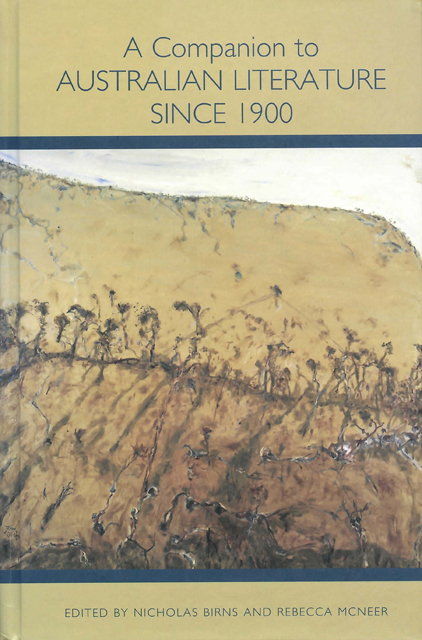Book contents
- Frontmatter
- Dedication
- Contents
- Chronology of Main Events in Australian History, 1901–2005
- Acknowledgments
- Note on the Cover Illustration and Artist
- Introduction
- Part 1 Identities
- Part 2 Writing Across Time
- Part 3 International Reputations
- Part 4 Writers and Regions
- Part 5 Beyond the Canon
- Notes on the Contributors
- Index
26 - Popular Australian Writing
Published online by Cambridge University Press: 10 March 2023
- Frontmatter
- Dedication
- Contents
- Chronology of Main Events in Australian History, 1901–2005
- Acknowledgments
- Note on the Cover Illustration and Artist
- Introduction
- Part 1 Identities
- Part 2 Writing Across Time
- Part 3 International Reputations
- Part 4 Writers and Regions
- Part 5 Beyond the Canon
- Notes on the Contributors
- Index
Summary
How I hate the very sound of business and when one advises me… . to write like Guy Boothby.
— Miles Franklin to Henry LawsonMr. Guy Boothby has come to great honours now. His name is large upon hoardings, his books sell like hot cakes, and he keeps a level head through it all. I’ve met him several times in England, and he added to my already large respect for him.
— Rudyard Kipling in Ward Lock’s Dr. Nickola (1906)Who is Guy Boothby that the Australian author of My Brilliant Career Miles Franklin should write like him and Rudyard Kipling admire him? Boothby is one of the many Australian authors who sold millions of books but who have remained largely ignored by literary scholars. While “literary” fiction and its authors should be celebrated, they represent only a portion of the Australian fiction landscape. This chapter documents one century of Australian popular fiction — popular is that fiction designated “genre” fiction, the crime, adventure, romance, and western novels that achieved widespread appeal and sold millions of copies in Australia and overseas. This chapter begins with the nineteenth century because Australian popular fiction is inexorably tied to fiction serialized in newspapers — the most common form of publishing in Australia.
The Colonial Period, 1860–1899
From the eighteenth century, “Australian” readers found their fiction in newspapers (especially weekly newspapers), and/or magazines (see Webby and Morrison). Not surprisingly, most of the early fiction came from “home,” the United Kingdom; what is generally not known is that a considerably amount of popular fiction also came from the United States and most particularly from the penny storypapers such as the New York Ledger. Indeed, since the earliest days of mass-produced fiction, the periodical world was much smaller than the geographical one; it was possible to read French fiction in New York, American fiction in Melbourne, and Australian fiction in London. But by the mid-nineteenth century, Australian periodicals increasingly offered material written by Australians for Australians.
- Type
- Chapter
- Information
- A Companion to Australian Literature since 1900 , pp. 387 - 402Publisher: Boydell & BrewerPrint publication year: 2010
- 1
- Cited by

